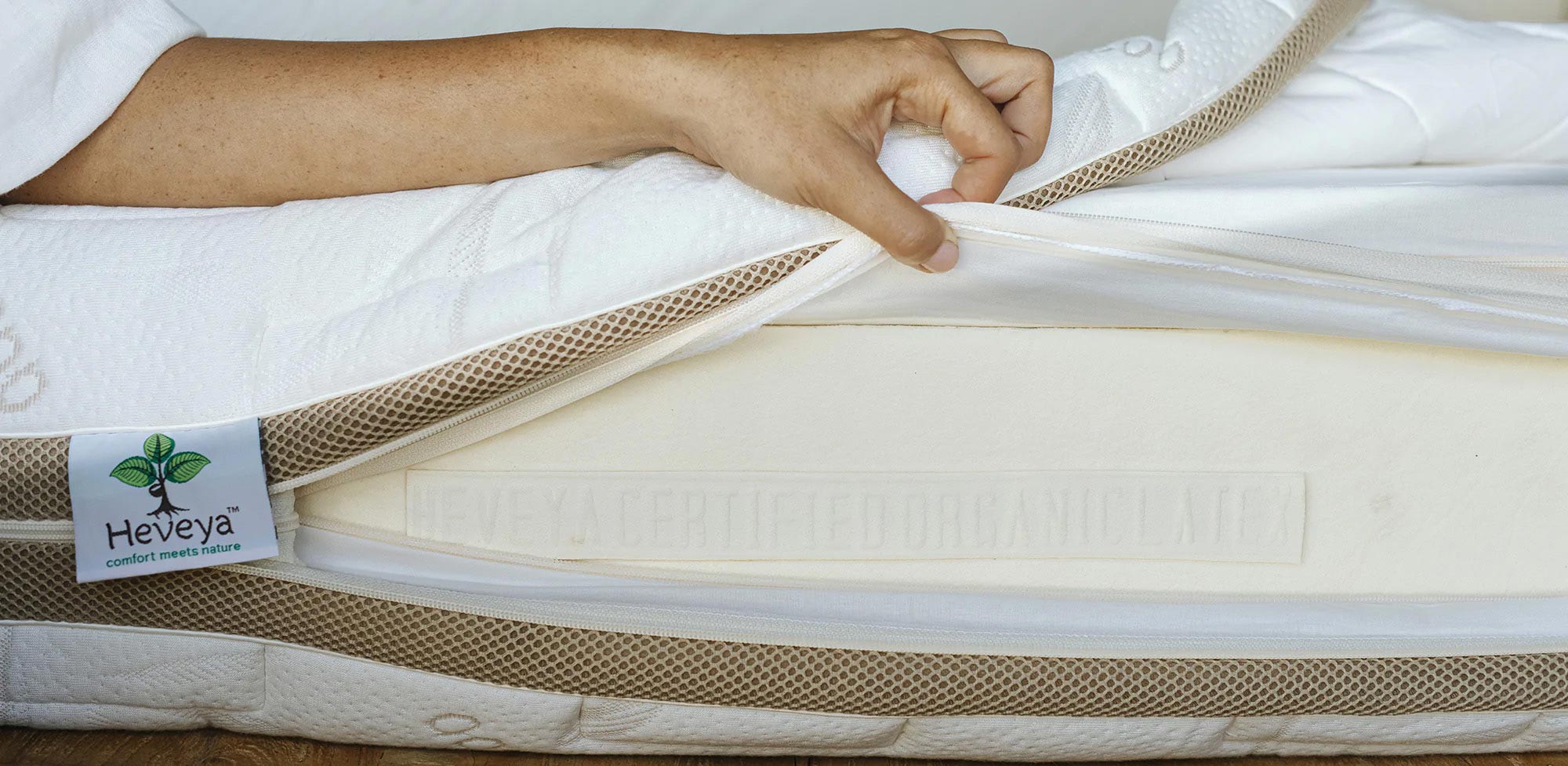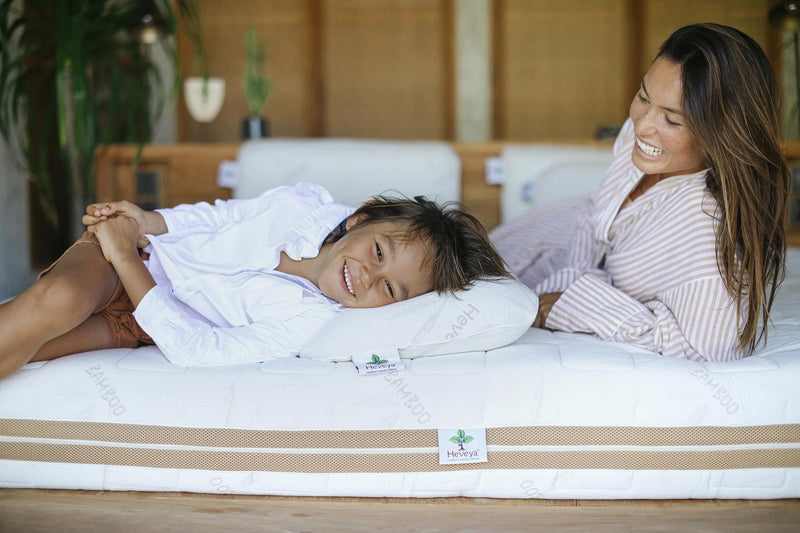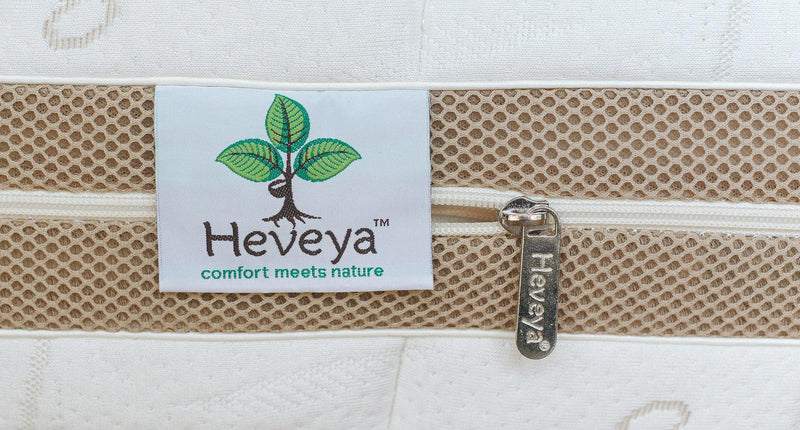Do you think you have bed bugs? Have you experienced any insect bites at night time? Maybe you have actually seen bed bugs in seams and crevices on your mattress. If so, you'll need to remove these bed bugs from your mattress and from your home, before they become an even bigger problem. Here we'll describe what you need to do.
What are bed bugs?
Bed bugs are small but visible wingless insects which feed on human blood. They range from light brown to reddish brown in colour and have a flattened oval shape (reference 1). At around 5 mm long and 2 to 3mm wide, they can be seen with the naked eye (reference 1), but tend to hide in the daytime and this makes them harder to spot. They come out to feed at night when humans are asleep (reference 2).

Where are bed bugs found?
Unlike dust mites which are virtually unavoidable in homes, bed bugs are not present in all homes. Indeed, bed bugs are not normal to have in the home: you should never try to just 'live with' them. If you do have bed bugs though, odds are they will be at their most numerous in and around the mattress and bedding, because that is where they will come to feed at night. However, they can be found almost anywhere, especially in hard to reach places, such as in crevices in the skirting boards, under carpets, and in cracks (reference 3).
Unfortunately, it doesn't always matter how scrupulously you keep your home clean, bed bug infestations usually stem from just one contaminated item entering the home (reference 2). This may be an article of worn clothing which has picked up bed bugs from being in someone else's home, or it may be clothes used when traveling and staying at hotels or on a cruise. A second hand piece of furniture can also be a source of a bed bug infestation.
Indeed, bed bugs can even travel through apartment walls, so if your neighbour has a bed bug problem, it could spread to your apartment through no fault of your own. Even a vacant apartment without any furniture can still get bed bugs if there is an infestation in an adjoining apartment (reference 2). Bed bugs can go for months without feeding if need be, making them very hard to eradicate.
Wherever there are many humans living near each other, the risk of bed bugs increases. This has led to a rise in the population of bed bugs everywhere: from 2009 to 2012, the number of cases of bed bugs in Singapore nearly doubled (reference 3).
Why are bed bugs a problem?

Bed bugs are a big problem because they actually bite and feed from human blood. A bed bug bite is red, puffy and itchy, and it can cause considerable discomfort (reference 2), since there are usually many bites all over the skin. Most people aren't even aware that they have been bitten until later. Remember, the bed bug feeds while humans are asleep. Because of this, some people assume they have been bitten by some other insect, such as a mosquito. So a bed bug problem can be difficult to recognize unless you actually notice the bugs or are actively looking for them.
Although bed bugs do not transmit disease (reference 2) they are still a problem. The itching and discomfort of bed bug bites causes problems to the sufferer, and also, bed bugs will keep multiplying in the home until they are dealt with. So bed bugs have to be removed: ignoring them is not an option.
Another big problem with bed bugs, aside from the bugs themselves, is their eggs. The bugs themselves are time-consuming to eradicate, but at least they are visible. Their eggs are extremely hard to see (reference 2), and because of this are very difficult to remove completely (reference 4).
How to remove bed bugs from a mattress
Follow these step by step instructions below to remove bed bugs from your mattress (reference 5).
- Remove your sheets, pillowcases and any other removable covers. Remember to carry them in garbage bags to avoid contamination on the way to the washing machine. Wash these in hot water.
- Throw out your pillow. Then vacuum your mattress carefully and thoroughly with the hose attachment, paying careful attention to seams, crevices and indentations where bed bugs love to hide. Empty the vacuum cleaner bag outside and clean the vacuum container to make sure there are no bed bugs hiding in the vacuum cleaner.
- Put your mattress and box spring each in a bed bug proof encasement. These are highly specialized mattress protectors which go all the way around the mattress. They are made of special material which bed bugs are unable to bite through (reference 5) and whose zipper is made to be so snug that even the smallest bed bug cannot escape through it. This cover has to be kept on for at least one year to be absolutely certain that all the bed bugs and their eggs in the mattress have died. Remember, a bed bug can survive for months without feeding.
- Kill any bed bugs on the bed frame and headboard, paying careful attention to joins and cracks. If you are using pesticide sprays for this, be very careful to read the whole label first and apply as directed. Insecticides can be hazardous and even fatal if used incorrectly.
- Isolate your bed. Move it away from the wall and put bed bug interceptor cups beneath each of the feet of your bed. These cups contain insecticide which traps and kills any bed bugs which might try to climb up the legs of the bed. Ensure that nothing on your bed touches the floor except the feet in the interceptor cups. Avoid using a bed skirt, wide blankets, or any other bedding which reaches the ground.
- Vacuum the floor thoroughly. Inspect carefully for bed bugs in other areas of your bedroom and in the rest of your home. Repeat this step at periodic intervals. Remember, any recently-laid eggs will be hatching and maturing during this time, so you need to keep vigilant.
In addition to all these steps, or instead of them, consider calling in a pest control professional which has plenty of experience eradicating bed bugs.
As you can see, removing beg bugs from a mattress is necessary but very time-consuming (reference 4).
A better option:

Instead of encasing your mattress in a bed bug proof cover for a year, you could consider purchasing a new mattress. A new mattress will give you peace of mind that there are no bed bugs in it, besides giving you a good night's sleep in comfort and luxury. Did you know that all Heveya® latex mattresses come with a removable cleanable cover? This cover can help prevent bed bug infestations in the future. Should one arise, if you detect it early on you will simply be able to remove the mattress cover and clean it.
Of course, if you have an infestation you should still take careful steps to eradicate existing bed bugs in your bedroom and your home first before purchasing your mattress. Bed bugs can spread quickly to other parts of the home, and you should certainly remove existing bed bugs and dispose of your old mattress before installing your new latex mattress.
It's important to take sensible precautions for the future: never place luggage on a bed, immediately remove and wash clothing when you come home from traveling, and avoid purchasing second hand items of furniture.
Conclusion
Bed bugs are a big problem because they will bite humans, causing itching and discomfort. Another problem is that bed bugs lay eggs and multiply very quickly within a mattress or other bedding. If you suspect you have bed bugs, take steps immediately to eradicate them, as infestations can spread fast to other areas.
Bed bugs can be found in even the cleanest of homes, because it takes only one contaminated article to start an infestation. In future, be very careful when bringing back your items from traveling: wash anything that is washable immediately.
In addition to the steps described above to eradicate bed bugs, consider purchasing a new latex mattress and latex pillow. Latex bedding is wonderfully comfortable, and our mattresses all come with removable cleanable covers which is a huge help in case of bed bugs. You will still have to remove any existing bed bugs (and dispose of your old mattress) before installing your new latex mattress, but this will help your mattress become less bed bug friendly in the future.
References













